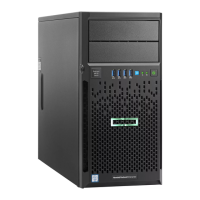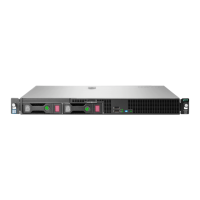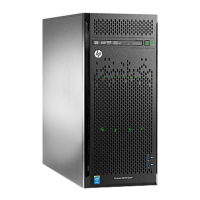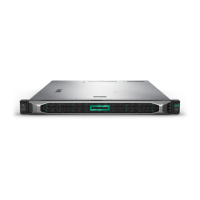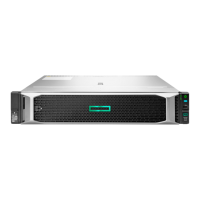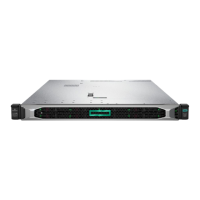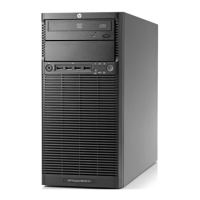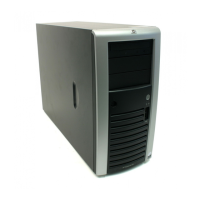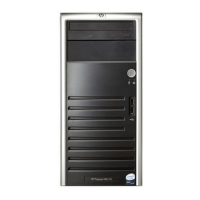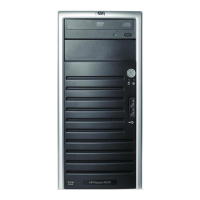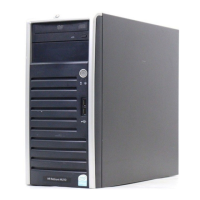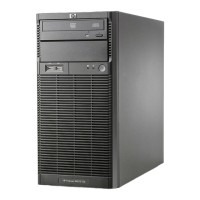Hardware options installation 79
20.
Route and manage the power cords through strain relief clip.
21. Power up the server.
HP Trusted Platform Module option
This server supports both TPM 1.2 and TPM 2.0. However, once the TPM version 1.2 is installed on the
system board, it can no longer be upgraded to TPM version 2.0.
For more information about product features, specifications, options, configurations, and compatibility,
see the product QuickSpecs on the Hewlett Packard Enterprise website (http://www.hpe.com/info/qs).
Use these instructions to install and enable a TPM on a supported server. This procedure includes three
sections:
1. Installing the Trusted Platform Module board.
2. Retaining the recovery key/password (on page 81).
3. Enabling the Trusted Platform Module (on page 81).
Enabling the TPM requires accessing BIOS/Platform Configuration (RBSU) in UEFI System Utilities
("HPE UEFI System Utilities" on page 101).
TPM installation requires the use of drive encryption technology, such as the Microsoft Windows
BitLocker Drive Encryption feature. For more information on BitLocker, see the Microsoft website
(http://www.microsoft.com).
CAUTION: Always observe the guidelines in this document. Failure to follow these
guidelines can cause hardware damage or halt data access.
When installing or replacing a TPM, observe the following guidelines:
• Do not remove an installed TPM. Once installed, the TPM becomes a permanent part of the system
board.
• When installing or replacing hardware, Hewlett Packard Enterprise service providers cannot enable
the TPM or the encryption technology. For security reasons, only the customer can enable these
features.
• When returning a system board for service replacement, do not remove the TPM from the system
board. When requested, Hewlett Packard Enterprise Service provides a TPM with the spare system
board.
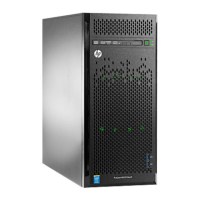
